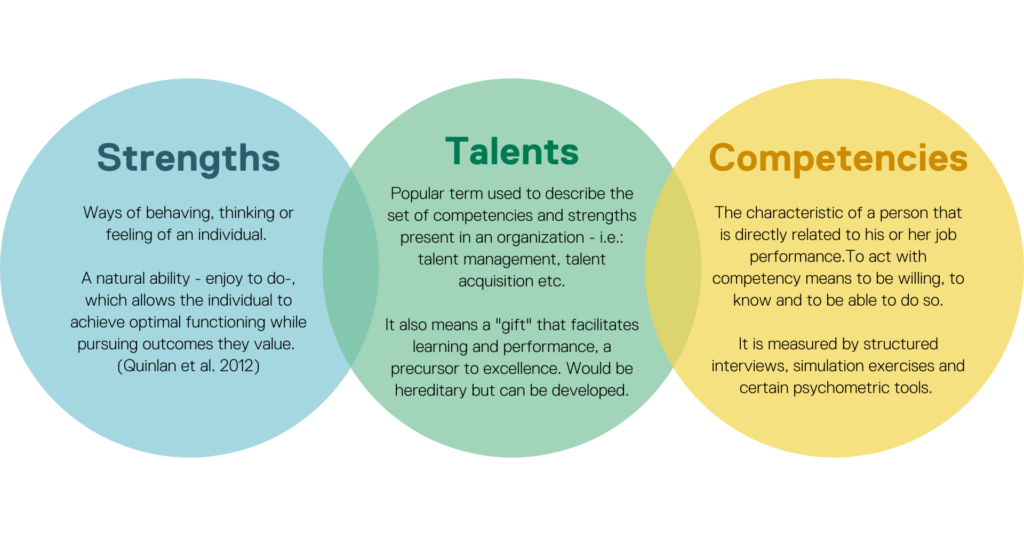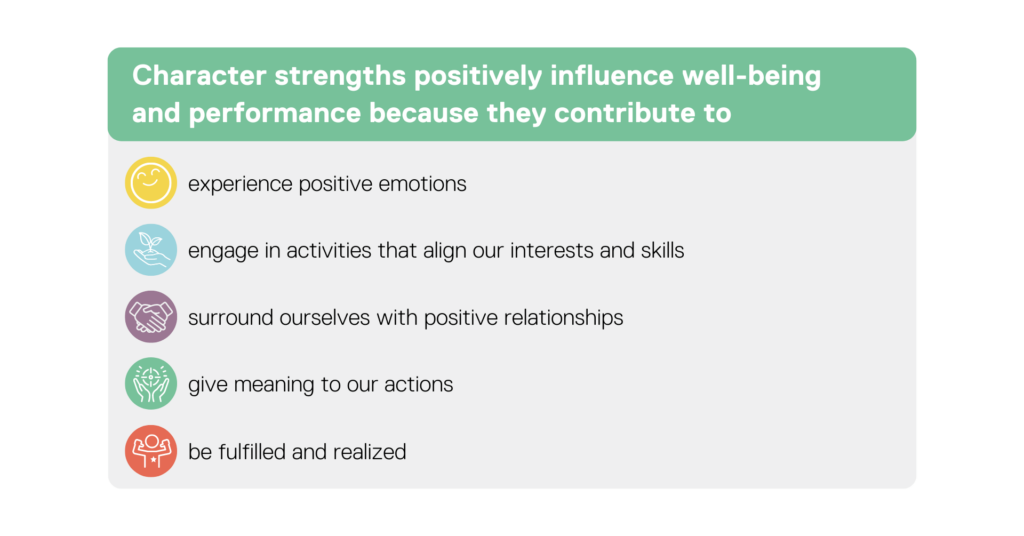How to Optimize the Employee Experience by Using Their Strengths?
We all have a visceral need to feel competent in our interactions with our social and physical environment, to have and make choices, and to maintain healthy relationships.
Understanding our strengths and being authentic to them allows us to align with our beliefs and values. It sets the foundation for better performance in our professional role, based on the expectations of the role. Let’s move on from principles to practices! Among the actions recognized as promoting the satisfaction of psychological needs, the first actions to be undertaken may vary according to the organization and the context. To guide you in your choice of priorities, ask yourself:
What outcome(s) are you looking for? Why should I focus more on strengths? What would I need to help myself? What challenges do I anticipate?
Since one of the keys to engaging leadership is leading by example, do the following reflection exercise first:
4 avenues for individual reflection
- When have you been most effective at work? What word(s) would you use to describe yourself when you are most effective?
- Can you remember a significant recognition? Why was this significant? What was said about you, your actions, your being?
- Review your performance appraisals from the past few years – what positive characteristics stand out? What challenges have you overcome, and what have you put in place to overcome them?
- Read your job description – what do you find particularly interesting to do? What are you most competent at?
This is an essential exercise: knowing and recognizing your own strengths, putting them into action, creating synergy – before using them as a leader with others.
In addition, it is part of the role of leaders to recognize the strengths of people at work and to create supportive contexts for their deployment. Whether it’s managing a project, mobilizing people, influencing change, or working effectively to keep a balance in times of crisis, focusing on strengths is an effective way to enhance and empower people to achieve their goals.
Name the Strengths. Put Them to Good Use. Acknowledge Them. Repeat!
The VIA – Values in Action questionnaire was developed following extensive research on the subject, to help identify key strengths. To access the questionnaire, click here.
1. Focus on strengths rather than weaknesses
What ratio of time do you spend noticing and discussing your employees’ strengths versus their weaknesses? How about in relation to yourself?
- Put more time into assessing and developing people’s strengths and skills – schedule time regularly to step back and update them.
- Every well-selected employee can contribute to success and in doing so, fulfill their potential.
- Identify employees with potential – an individual’s greatest resources are found in what they do best, not what they do poorly. Competencies that draw on our talents and strengths are most effectively developed.
2. Make assessments
EPSI can help you conduct these individual and organizational assessments.
- What are the expected competencies in the organization – and in the job?
- What talents are in place in the organization – in the team?
- What are the gaps between the needs and the strengths in place?
- What are the opportunities?
- Do you have leaders around you?
3. Co-responsibility
To the extent of people’s abilities:
- Be interested in and consider the perspective of others
- Allow people to engage in tasks and responsibilities by choice – can you give your employees some flexibility?
- Create synergies– by sharing, complementing, and recognizing each other’s strengths.
- Accept that different visions can coexist
- Explain the rationale behind decisions – to better understand the WHY
4. Creating flow
At the conjuncture of interests and skills is the optimal experience.
- Create opportunities to experience success in tasks and responsibilities that present an optimal challenge
- Allow everyone to contribute through action or thought to meaningful tasks – any job, any task can be important, even critical to successful organizational performance.
- Beyond jobs, identify roles that people find more engaging and satisfying to do.
- Take the pulse on a regular basis
5. Create versatile teams
- Announce this strategic priority- know why and how
- Value progress – acknowledge it regularly!
- Reward collaboration
- Measure performance
- Develop a culture – create habits
- Develop caring and talent-sensitive leaders
- Acknowledge emotions and feelings in the work environment – create a sense of trust and respect
- Make everyone feel useful – give meaning
6. Persevere!
Getting to know yourself and others is a long and challenging process. Changing the culture to optimize the employee experience is also a process that requires patience, leadership, and vision. Connecting to yourself, your environment and your team takes time.
It is when our talents, competencies and strengths come together that actions make sense. They become important to us. This feeling contributes to creating quality motivations for an optimized employee experience.
Evaluate strengths
Engage people
Evolve towards other perspectives
Coming soon:
Blog: What to do with weaknesses?
References available in the blog post “Why optimize the employee experience through the use of strong bridges?“
Suggested book: “Why is motivating so complicated? : and how to get there!”, by Susan Fowler, 2017



